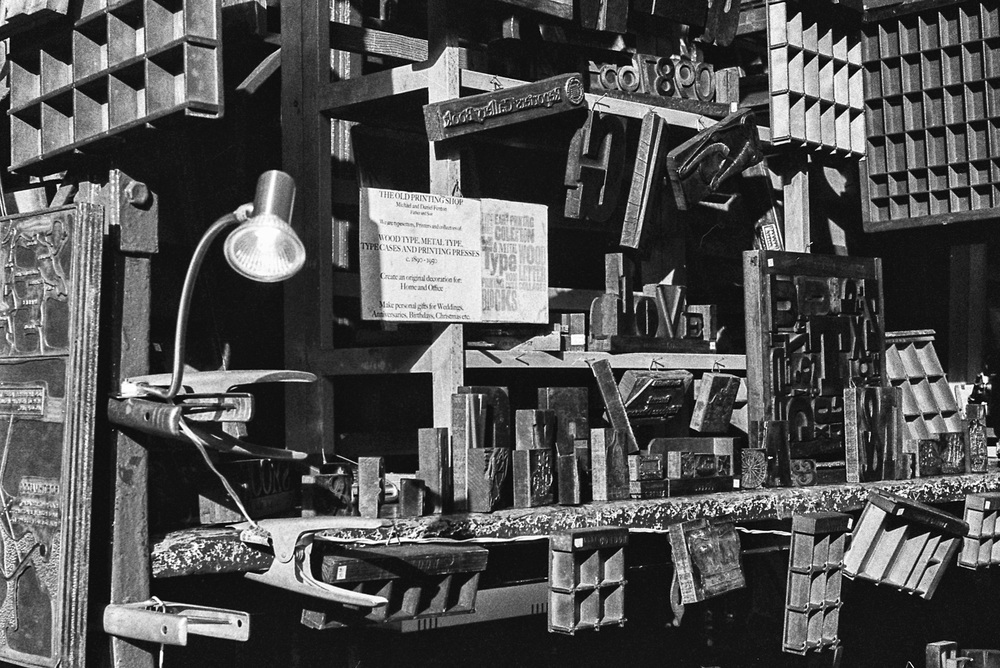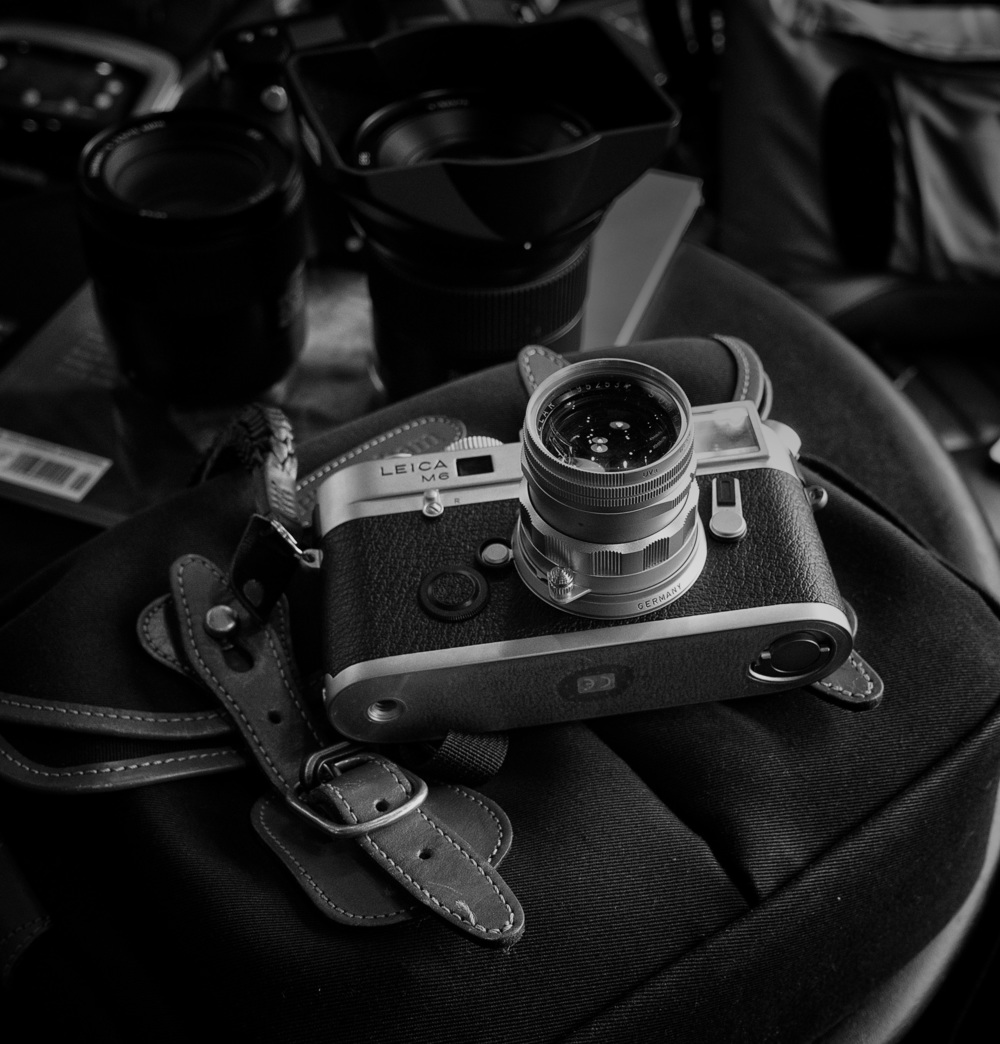After all the scurrying around London with Adam Lee and our M3, M7 and III cameras, I slotted a film into the lovely, mint-condition M6TTL I bought at a bargain price at last year’s Bièvres Camera Fair in France. The camera reminds just what a gem this version of the M6 has always been. In many ways I prefer it to my rather tatty (but tatty brassing is ok, right?) 2005 MP.
The M6, particularly in silver as mine, is the quintessential Leica film camera. Sacrilegiously I even prefer it to the M3 (mutterings from Adam on this, I know, and, yes, the M3 does have a wonderfully large 50mm viewfinder setup).
It’s just that the M6TTL has a light meter (as does the classic M6, of course, not to mention the M5). Modernist I may be, but I find this confirmation of my finger-in-the-wind measurements somehow comforting. M3, M2 and M4 fans will be aghast.
But what I like most about the TTL is the large shutter speed dial that can be moved easily with the right forefinger, thus making juggling of aperture and speed a simpler task. The MP, as with the classic M6, has a smaller speed dial that needs to be gripped—I find myself using thumb and forefinger most times—and it is definitely less convenient than the dinner plate on the TTL.

A further advantage of this speed dial is that it turns in the right direction to harmonise with the instructions of the little triangles in the viewfinder when adjusting exposure. Both lens and speed dial on the TTL move in the direction you expect and not counter-intuitively as is the case with the classic M6.
The big selling point of the TTL upgrade was improved flash metering but I am not too worried about that; for me it’s a side show and a classic M6 would suit just as well.
In comparison with its successor, the M7, the M6TTL charms with its basic simplicity and purity. The M7, with aperture priority and electronic helpers (not to mention a tendency to eat batteries), is somehow too close to the digital experience.

This, you will say, is pure poppycock, but it’s something I feel instinctively. Using the M7 will be exactly the same as wielding the newly introduced M-D, a camera which shares all its basic controls and abilities except that it replaces celluloid with a sensor. But we can forgive the M-D because it’s a digital.
All this was just an excuse to show you a picture of the M6TTL. These cameras cost more on the used market that the M6 Classic but I think the extra is worth it.
In the picture: Leica M6TTL, originally sold in 2000, with a 1963 50mm Rigid Summicron, one of my favourite lenses both in terms of visual appeal and optical performance.
For a great review of the M6TTL read Michael Reichmann at Luminious Landscapes (may require a subscription of $1 per month).
- Subscribe to Macfilos for free updates on articles as they are published. Read more here
- Want to make a comment on this article but having problems? Please read this


hi mike – I bought a black M6TTL last year too (in Paris), and have shot almost a hundred rolls of Tri-X with since then (I have just got back into film photography). And only a few weeks ago a friend loaned me (one of those extended loans) a chrome M6, which has a wonderful rigid summicron like the one in your photograph. They are both far from ‘mint’ condition as they have been used by a professional photographer for a few decades, but that only adds to the charm. I am amazed at how good the lens is, given that it was made in 1965 – is wonderful how this old sold technology keeps going forever. Maybe see you at Bievres next year – I just got back from a trip and wanted to take pictures of the flooded centre of Paris :-). Thanks for all the interesting material on your site, which I am just discovering. Best, Henry.
Dear Henry
Thanks for sharing your experiences. I can’t claim to have shot 100 rolls in the past year but I do understand your enthusiasm, especially for the rigid Summicron. It is a wonderful lens and epitomises the attraction of the Leica M system as a long-term investment. Even many of those much earlier lenses from before the war are still capable of giving a good account of themselves after 80 years or so. Not many of today’s electronic lenses will still be in business after eight years, not eighty.
Mike
Although I am thoroughly jealous of you new M-D I do still love my one and only Leica, the M6TTL. For me it strikes the right balance of technology and value for money, buying it was the best decision I ever made in Photography.
I can’t dispute that. It is an excellent camera and I would hold on to it. A classic.
. . . the link to Michael Reichmann at Luminous Landscapes is broken . . . .
Thanks for pointing this out, Keith. I’d entered some garbage into the link field. However, now I am working in the field on the iPad I notice that the link opens LL but stops at Michael’s paywall. I’d overlooked the fact that he charges $1 month for access…. You may or may not have success in accessing the article and I apologise to readers for not realising this before I wrote the article.
Blimey Mike… Interesting that you should mention the M6 generation at this point… Yesterday, I bought an M6 with a .85 viewfinder… I like the TTL version, but it does not suit my DR 50 Cron.
I also added a 40mm Cron, simply because it is very light and also black… I thought that the silver DR looked a bit weird attached to the front of a black M6. It also has a massive reputation amongst many of the film photographers that I appreciate.
I am still very likely to buy an M-D, it is just that I am not liking the idea of giving huge swathes of cash to my niggardly government, I will wait for a few to appear on the used market…. and swoop. In the mean time, I will slowly gather about me a few more appropriate black lenses.
How was your day with Adam and the face off with the M-A vs M-D? BTW, should that have not been the MP, rather than the M-A?
Congratulations on the M6, I’m sure you will love it. I can never make up my find whether I prefer chrome or black cameras. Currently I’m going through a black phase and can’t wait to get my MP back from CLA. I also have a nice black M4 and, of course, the new M-D.
The comparison was indeed between the M-D and the M-A which we borrowed from Leica for the day. They represent Leica’s latest M-Digital and their latest M-Analogue. I agree that the MP, with lightmeter, could have made a more worthwhile comparison. But, then, perhaps the M7 is the nearest to a film version of the M-D because of the aperture priority mode.
All went well and we are working on the results now.